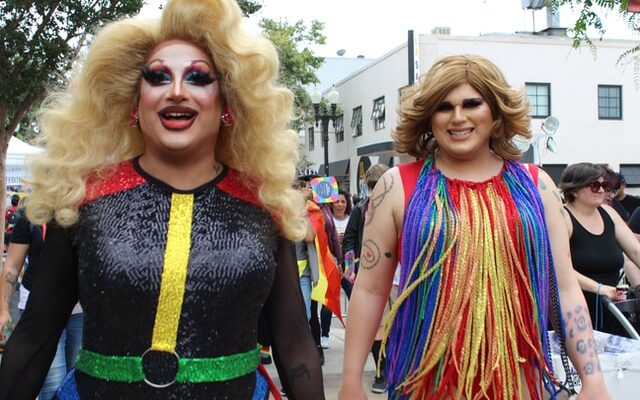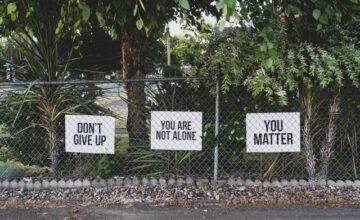Even though Ru-Paul’s Drag Race first aired in 2009, it has recently been booming with popularity, gaining more and more following, multiple spin-offs and now even has gone international. It has turned into an art form enjoyed by people of all types and is a huge influence in pop culture today. Slang has turned “what’s the gossip” into “what’s the tea sis?”, your best friend has become your best Judy, and something amazing suddenly “snatched your wig.” The drag community is a huge part of the LGBT community, and is open and welcoming, bleeding with positivity and fierceness.
The pandemic has made it hard for these performers to actually participate in drag shows since restaurants, bars, and clubs closed down. Things shifted from drag brunches and queens on runways to Facebook live performances with drab lighting while trying to fit into weird places. Performing in basements, kitchens, and bedrooms was definitely not ideal for them. I suppose the time at home led to some creativity and creation so they could work towards their craft, though most people don’t realize how expensive it can get. Wigs and gowns and makeup all add up pretty quickly. Some people make their own outfits and costumes, they can style their own wigs, but others go all out, spending outrageous amounts of money, but if they are doing what makes them happy, then what does it matter?
For much of history, drag queens were men, and many people still associate it as such. In more modern times, cisgender and trans women, as well as non-binary people, also perform as drag queens. The idea of drag is being over the top and hyper feminine. They pad their bodies to give them more curves, and exaggerate their makeup.
There are so many categories and variations within this art other than just drag QUEENS. A drag king is, you guessed it, the opposite of a drag queen, hyper masculine and with classic male clothing. These individuals commonly dress up, paint their faces (do their makeup) and perform in drag shows which generally include lipsyncing, dancing, and live singing. They work for little money from the venue, with their only income being tip based. These shows can be comedic, fun, artsy, and are always so unique and you never know what drag queens, or what numbers they may perform.
It seems silly that there is any sort of unacceptance or controversy around dressing outside your gender, since famously, the earliest forms of drag can be seen in Ancient Greece and Shakespeare where men would be cast to perform as women. The term “drag queen” was first used to describe men appearing in women’s clothing in Polari—a type of British slang that was popularized among gay men and the theater community in the late 19th and 20th centuries. And while drag has long maintained a powerful presence in popular culture, more recently, it has developed a strong foothold in the art world as well.
Families are very common within the LGBT and drag community. There is unfortunately a lot of negative relationships with blood relatives for a lot of these individuals, so they create their own chosen families. These families can also be referred to as houses and begin with a drag mother. This is usually an experienced drag queen who takes new queens under their wing. They can help them start their journey in drag, help them find their style, and sometimes pass down a drag name. Laken Edwards of the Haus of Edwards has about 6 drag daughters, one of which is Alyssa Edwards. Some do not take the house name, but others do.
A name can be the beginning of a queen’s journey. If it is not a family name that is passed down, it can be the base of their drag persona, and influence what kind of style they want to pursue. It really just depends on the queen and what inspires them, but other can be based off of something and turn into a play on words such as Kora Sline, an obvious play on “Chorus Line” or Sharon Needles (sharing needles).
Trixie Mattel is a campy queen who is over the top, with looks based on a hyper feminine, very pink barbie type of character. Hence the name Mattel. Trixie once said “most queens paint for the back row, I paint for the check cashing center down the block.” Camp is deliberately exaggerated and theatrical in style, typically for humorous effect. Generally they are painted heavily and extreme, almost like a caricature. A fishy queen is painting and dressing more realistically, with the purpose of looking like a real woman. Some dedicated queens even go as far as getting plastic surgery and botox to make it even more realistic. There are spooky queens, artistic queens, bearded queens, the list goes on. There are no rules when it comes to drag, leaving it all open for interpretation and variety for all the queens.
Drag is ultimately about expression. It has been and will continue to break down the gender norms that have been placed in societies. What began with men dressing as women has helped inspire all sorts of people to express themselves. There has been and will continue to be ever-expanding styles of drag which allowed for new kinds of queens to form, leaving space for even more experimental drag. Drag is only going to get weirder, more expansive, and more prevalent within society. Drag radiates love and positivity, not just for others, but for those doing it themselves. As the great Ru Paul says “If you cant love yourself, how the hell you gonna love somebody else.”
By Olivia Small Activist Writer





